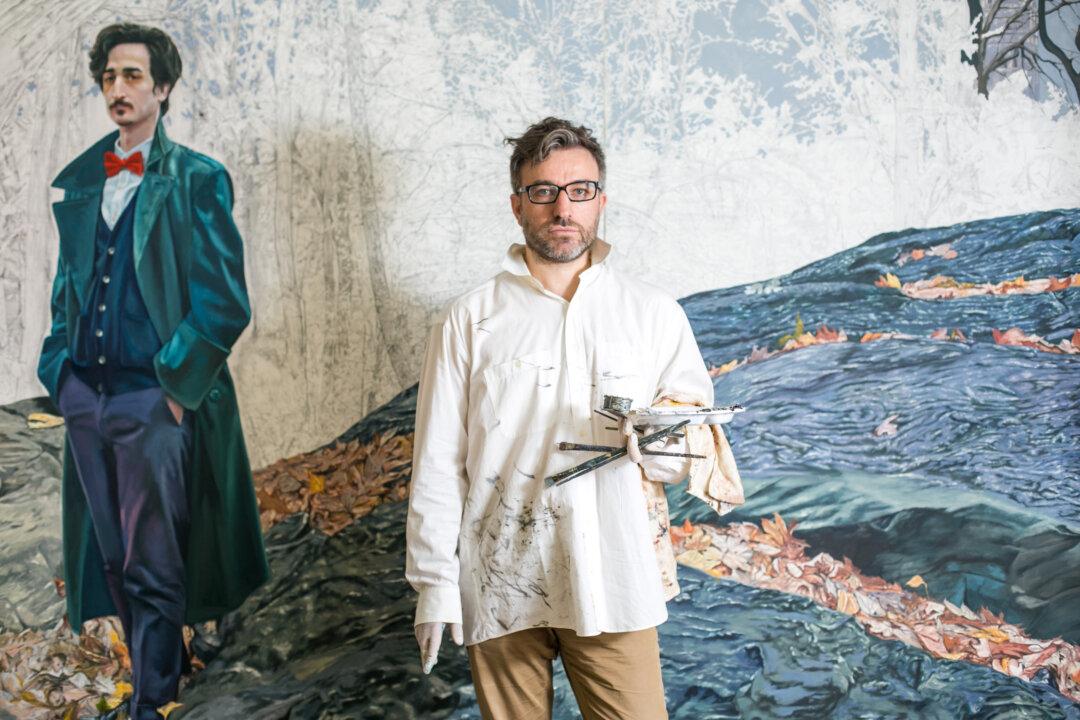NEW YORK—A painting is not just something to be hung on a wall once finished. It is a creative feat to be celebrated for Fernando Martin Diez-Cabeza. The Spanish globetrotter turned New Yorker brings his life-size portraits into the world as mysterious, suspenseful, theatrical experiences. He unveils his paintings.
He pulled down the red velvet drapery of his latest piece, “The Gentleman With the Red Bow Tie,” to an eclectic party of 200—young and old, racy and dapper, and any variation in between. All clapped and cheered, transfixed and enthralled by the painting on the stage of the unexpected yet bizarrely fitting venue of a Russian Orthodox cathedral in the East Village.
Diez-Cabeza’s portrait of Archdeacon Father Michael Suvak hung in the same reception hall. The Archimandrite, Father Christopher, sat at stage right, mingling and witnessing the whole event unfold.
[gallery size=“large” ids=“2178087,2177968,2177722,2177721,2178103”]
Johnny Maroney, who had posed for the portrait standing by some rocks in Central Park and who had never seen the painting before, shed tears of joy. “I’m overwhelmed,” he said, after all the cheering subsided. “It’s like a frame from a film. Not many people who pass through Central Park wear a red bow tie. ... I love that it’s open to interpretation for why you would pass through Central Park. Where you are coming from, and where you are going?”







